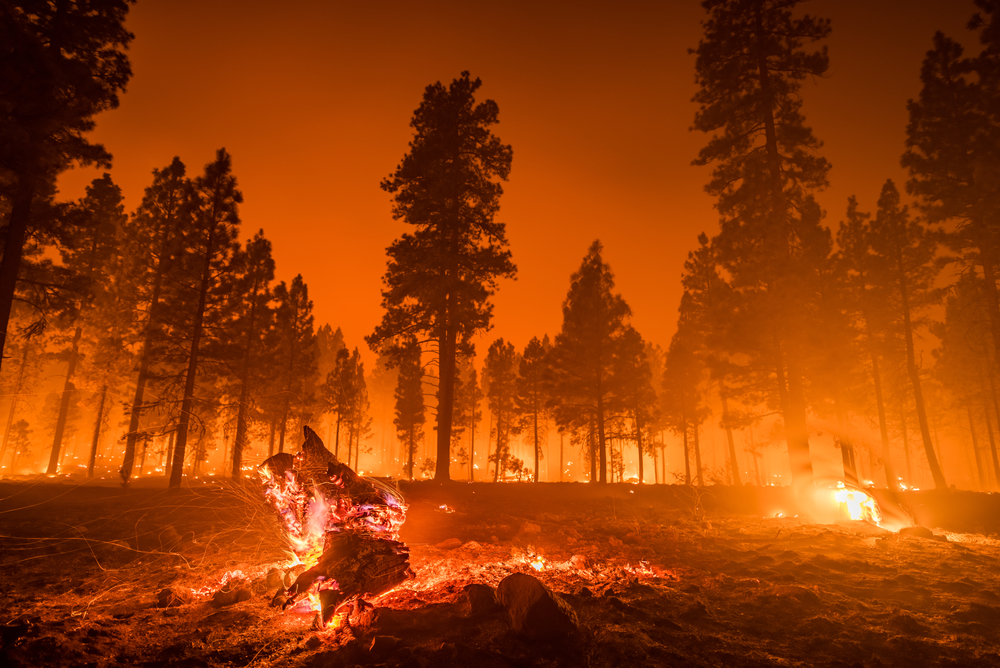Wildfire: Human activity has ‘reduced the natural resilience of some ecosystems to fire’
- July 4, 2022
- 8:32 am


Iain Hoey
Share this content
New research led by the University of East Anglia (UEA) has highlighted how the risk of wildfire is rising globally due to climate change and how human actions and policies can play a critical role in regulating regional impacts.
The article, published in the journal Reviews of Geophysics, involved scientists from UEA, Swansea University, the University of Exeter and Met Office in the UK, CSIRO Climate Science Centre in Australia, together with colleagues from the US, Germany, Spain and the Netherlands.
The study assessed 500 previous research papers and carries out a re-analysis of state-of-the-art datasets from satellite observations and models and includes analyses of trends in fire weather and burned area for world regions covering all countries, continental-scale macroregions, and key regional ecosystems for fire activity or impact.
It explores the relationship between fire trends and a range of controls on fire activity, including climate but also human activity, land use and changing vegetation productivity, which have with important impacts on the ignition of wildfires and their spread across landscapes.
The authors highlight that humans have important regional effects on wildfire activity in a warming world, such as having increased fire ignitions and reduced the natural resilience of some ecosystems to fire, most notably in major tropical deforestation zones of Amazonia and Indonesia.
In contrast, however, human activity has also reduced the spread of wildfire through naturally fire-prone landscapes by converting land to agriculture and fragmenting the natural vegetation, as seen in savannah grasslands in Africa, Brazil and Northern Australia during recent decades.
Lead author Dr Matthew Jones, of the Tyndall Centre for Climate Change Research at UEA, said: “Wildfires can have massive detrimental impacts on society, the economy, human health and livelihoods, biodiversity and carbon storage. These impacts are generally magnified in the case of forest wildfires.
“Clarifying the link between forest wildfire trends and climate change is critical to understanding wildfire threats in future climates. Societies can either push with or pull against the rising risks of fire under of climate change, and regional actions and policies can certainly be important for preventing wildfires or reducing their severity.
“Ultimately, though, we will be fighting the tide of escalating fire risks as the world warms further. Doubling down on efforts to cut greenhouse gas emissions and limiting warming to below 2°C is the most effective thing we can do to avoid the worst risks of wildfire on the global scale.”
Key findings from the analyses include
The length of the annual fire weather season has increased by 14 days per year (27%) during 1979-2019 on average globally and the frequency of days with extreme fire weather has increased by 10 days per year (54%) during 1979-2019 on average globally.
Fire weather has risen significantly in most world regions since the 1980s. Increases have been particularly pronounced in western North America, Amazonia and the Mediterranean.
At 2°C this will also be the case in the boreal forests of Siberia, Canada and Alaska and the temperate forests of the western US. At 3°C, virtually all world regions will experience unprecedented fire weather.
Globally, the area burned by fires has decreased by around one-quarter – or 1.1 million km2 – during 2001-2019. Much of the decrease – 590,000 km2 – has been in African savannahs, where 60-70% of the area burned by fire occurs annually. Local/regional human impacts have reduced the area burned by fire in tropical savannahs, in combination with lower grassland productivity during (increasingly drier) wet seasons.
Large increases in burned area have been observed elsewhere, and especially in temperate and boreal forests. For example, the area burned by fire has increased by 21,400 km2 (93%) in east Siberian forests and by 3,400 km2 (54%) in the forests of western North America (Pacific Canada and US combined).
Co-author Dr Cristina Santín, from Swansea University and the Spanish National Research Council, added: “Despite the fact that weather conditions promoting wildfire have already increased in nearly in every region the globe and will continue to do so, human factors still mediate or override the climatic ones in many regions.
“We hope this research helps to resolve the entrenched and conflicting views on climate change versus land management being the root cause of these catastrophic fires.”



